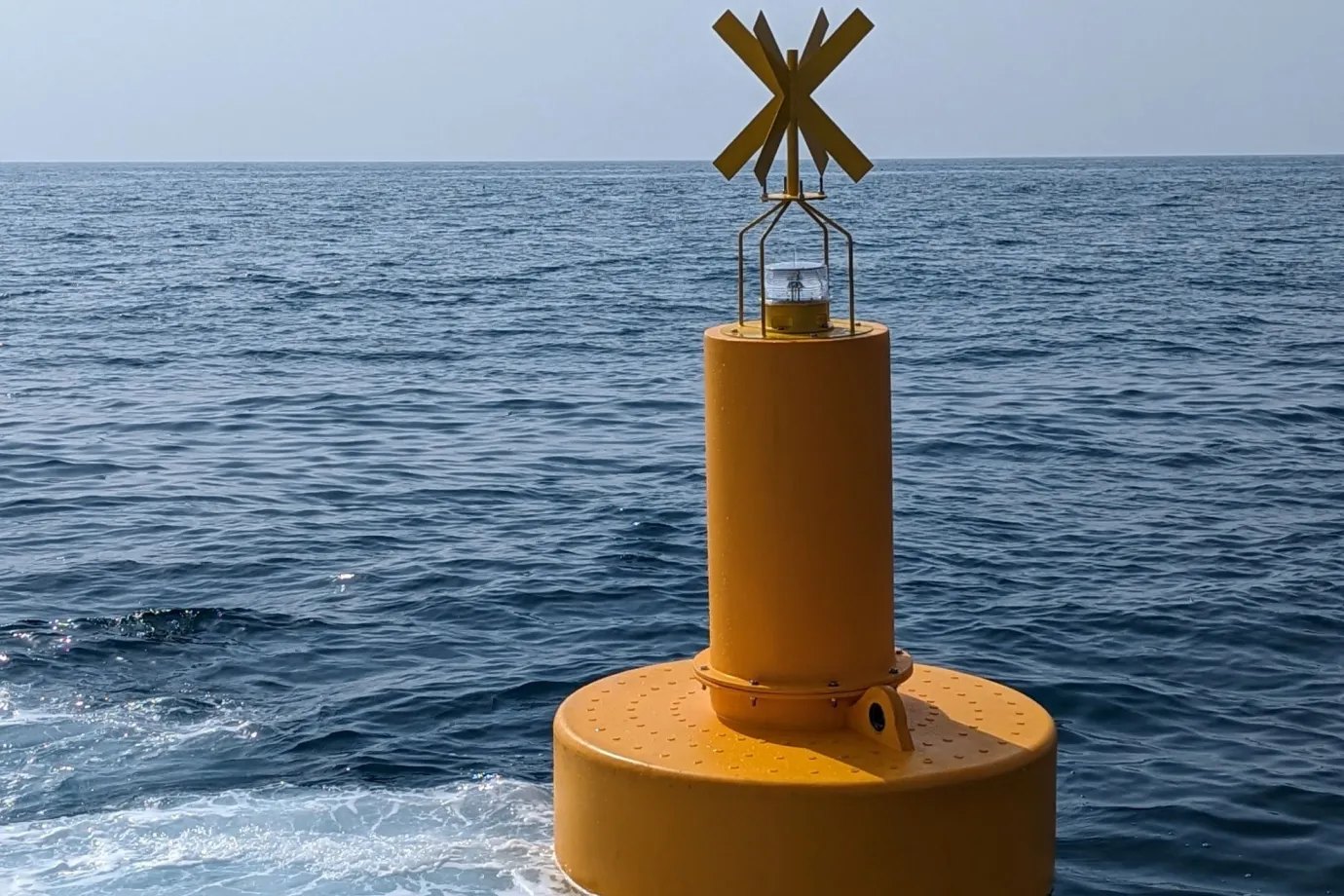The spread of pollution on the surface of the world’s waters makes floating booms an essential tool for controlling and directing waste. There are many types and applications of floating boom barriers. For more information, you can refer to the article on floating booms. The Trash and debris boom is a type of boom used to prevent floating trash from spreading. The purpose of this article is to introduce trash and debris booms, their applications, structure, installation guide, and so on.
Built for continuous use and maximum durability, our “permanent debris boom” protects water infrastructure while allowing natural flow.

What Is the Trash and Debris Boom?

Debris Booms (also called trash booms) are floating barriers that contain and control pollution in waterways such as ponds, rivers, channels, and canals. Placing a floating debris boom strategically will divert gross pollutants into a catchment area where they can be collected from the waterway. Increasing water pollution has made trash and debris booms one of the most practical tools for controlling and collecting debris in recent years. Therefore, choosing the right type is crucial.
See also: “Marine Booms for Environmental Protection“
Water Conditions and Debris Booms
In the case of using debris booms, water conditions and marine environment play a significant role. There have been successful implementations of these containment booms with marine-grade fabrics and components in different marine environments. Here are the three main areas that debris booms are usually used:
- Calm Waters
- Fast Waters
- Open Waters
Types of trash and Debris Booms

Floating debris booms eliminate the spread of plastic trash, debris, leaves, timber, and other aquatic plants. Based on what marine environment and water condition your project is, we offer various types of debris booms:
Permanent Debris Boom
Permanent Debris Booms, also known as Permanent Pollution Booms, are designed to collect the floating trash and debris at the inshore, coastlines, waterway, dams, reservoirs, weirs, and other fast waters where the tides are stronger and frequently used to protect critical infrastructure. This type of debris booms significantly hinders materials to flow and spread.
Litter Fence Boom
Litter Fence Booms are ideal for waterways, reservoirs, marinas, private water bodies, nature reserves, and other fast waters where an additional height or freeboard is required to collect and control wind borne debris, preventing them from spreading. Moreover, Litter Fence Booms can be used to keep out wildlife.
Log Screen Boom
Log Screen Booms are other debris booms widely used to collect trash and other materials in fast waters, such as waterway, inshore, coasties, weirs, major hydro dams, and reservoirs. The mesh screen of this type of debris boom is specifically designed to smoothly trap the trash and other materials, preventing them from spreading out.
Modular Debris Boom
Modular Debris Boom are specified to be used in fast waters, such as waterways, reservoirs, private water bodies, and nature reserves. Each 3m module of these types of debris booms connect to each other by a plate, making them resistant to abrasion, chafe, and impact damage.
Applications and Configuration of Debris Booms
The purpose of these trash and debris booms is to prevent the spread of trash, plastics, debris, and seaweed/sargassum. They can contain, deflect, or secure a perimeter against:
- Floating Debris
- Wood piles
- Timbers
- Trash
- Aquatic Plants
- Sargassum
The most basic design is a string of single logs connected by a chain, ring, and toggle. In this design, the boom sticks and connections carry the tensile load in the boom. This design can be modified to attach boom sticks to a continuous wire rope that supports the load. Debris booms are provided with an upstream smooth face to facilitate the sliding of debris along the boom. They can be anchored to one shore and maintained in place in the current with fins or rudders or may be anchored at intermediate points using pilings or submerged anchors.
Another trash and debris boom design intended to control heavy debris loads is the cable or net boom. This boom consists of a net of two or three wires with cross tics hung from a flotation member that may be timber or any other suitable material. The main advantage of such a boom is its extremely high strength. In most cases, intermediate anchors are unnecessary for timber booms due to the high tensile strength of the cable. The most significant disadvantage may be the difficulty of cleaning the boom. Today with Tech advancements Debris booms are constructed from high-quality fabrics or HDPE corrugated double-walled sheets.
Floating trash and Debris Boom Installation Guide

Our floating debris booms are installed easy and fast, being straightforward and saving you time. Installing a floating debris boom generally involves the seven following steps. Depending on the site, additional designs, layouts, and performance requirements may be required.
Step1: Lay out your bundles/sections of debris boom along the shoreline.
Step2: Slide together the aluminum section connectors.
Step3: If applicable to your debris boom, connect the grommet eyes of the sections using rope ties or heavy-duty zip ties.
Step4: Attach sections of the chain using shackles located at the bottom of the curtain.
Step5: Tow the curtain out into position.
Step6: If applicable, anchoring along the length of the boom is done by attaching the anchored buoy to the curtain through the use of a painter’s line.
Step7: If the skirt of the boom is tied up, these ties can now be released to allow the skirt to fully extend in the water.
Conclusion
Trash and debris booms have become indispensable tools in combating the increasing pollution in the world’s waterways. These floating barriers contain and control debris and protect aquatic ecosystems, infrastructure, and water quality. The versatility of debris booms allows them to be deployed in various environments, such as calm, fast, and open waters, ensuring their effectiveness in different conditions.
With advancements in technology, trash and debris booms now come in a variety of types—such as Permanent Debris Booms, Litter Fence Booms, Log Screen Booms, and Modular Debris Booms—each designed to address specific challenges. Whether preventing the spread of trash, trapping aquatic plants, or safeguarding critical infrastructure, choosing the right debris boom for the application is critical.
Moreover, modern debris booms are constructed from high-quality materials that enhance durability and performance, ensuring long-term effectiveness. Their straightforward installation process also allows for rapid deployment, reducing downtime and effort.
As water pollution rises, investing in appropriate trash and debris booms is crucial for cleaner waterways and a healthier environment. Following the guidelines and considerations outlined in this article, you can ensure the optimal selection and installation of debris booms to meet your needs.
A debris (trash) boom is a floating barrier that intercepts and concentrates floating waste, plastics, weeds, branches, and driftwood—so crews can remove it safely from a collection point. It’s used on rivers, canals, reservoirs, ports, and outfalls as part of wider marine-debris control programs.
Yes. Agencies fund riverine capture and removal because interception at chokepoints measurably reduces downstream debris and improves habitat and navigation. Multiple NOAA projects document debris capture and ongoing maintenance programs in river systems.
– Permanent Debris Boom (PDB400 / PDB600): fully flush-faced, self-clearing design that sheds debris at the right angle; mid-point connection eases retrieval. Break load up to 55 T; applications include inland waterways, reservoirs, marinas, nature reserves.
– Log Screen Boom (LSB600/800/1000): for heavy wood + macro-plastics; steel mesh panels with full articulation, break load up to 100 T, draft up to 3 m; ideal at hydro dams, reservoirs, weirs.
Let site energy and debris type drive sizing. For wind-blown trash, ADORTech’s PDB supports a “Fence-range” option for additional freeboard; drafts and panel lengths are chosen to suit flow and service access. Our engineers finalize anchors and loads.




